Bertram 28 II
by David Pascoe
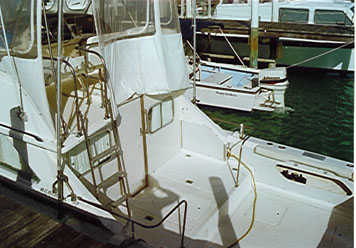
The Bertram 28 II can readily be described in one word: fisherman. One look at this boat reveals that that is all it was designed to do. Oh, with a swim platform it would certainly make a good dive boat with that huge cockpit. But a family cruiser she isn't. The nine foot long cockpit is one of the largest you'll find for any boat of her size, a feature that renders the cabin to little more than storage space. For other than finding a nook to take a nap or a leak, it isn't intended for much else.
The 28 II is a very solid, well-built boat that is very nice looking, but otherwise not a very practical vessel. An experienced eye quickly picks up troublesome design features. Nearly everything that one might come to dislike about the 28 II stems from the shallow hull design. This hull simply doesn't have enough depth to it. Which is why you have that two level cockpit with a step-down in the middle that tends to send the unwary sprawling from time to time. And why you have to crouch to enter the cabin, and why there's not enough floor space in the cabin. But you can't deny its darn good looking. The styling is timeless, and no doubt explains why they are still a hot item, at least in the south.
As a Bertram model line goes, it was fairly short-lived, adapted from the 28 FB Cruiser, and being built from '86 - 92. But enough of them were sold to keep them from being scarce. It is a fairly heavy boat for its size at nearly 12,000 lbs, most of which is in the hull and deck which, of course, are rock solid.
In our view, there is much to love and dislike about this boat. You love the high quality strength of the glass work, loads of stainless steel hardware and the overall quality that holds it up over the years. Yet you also have wonder at some of the silly things that don't quite fit your image of a Bertram, such as vinyl and plywood bench helm seat and all those screwed in place cockpit side liners. Then there is the mica/plywood aft cabin bulkhead that may or may not develop some rot in it. The installation is done as well as it can be, but it is still wood and you wonder why it is there.
The reason, of course, is that Bertram tried to hold the price down, a feat at which they did not succeed very well. High quality in small boats frequently means that the boats don't sell due to price. Its one of the reasons Hatteras stays out of the small boat market. In 1992 the base advertised price was $118,000.00 with gas engines. Add in the goodies and you've got a 28' boat that can cost nearly $150,000, a point which can narrow the market down in a hurry.
As with all small boats, bridge space is a problem. Bertram tried to solve the problem by adding a raised instrument panel which not only looks silly, but places the engine controls in a terrible position. This feature about the engine controls is just plain irritating, for whether you are sitting or standing, they are uncomfortable to operate. Yet the wheel placement is fine.
There were only two engine options, Merc. 260's and Volvo 200 HP diesels. We've never seen one with the diesels and can't imagine how they manage to get those engines into that small space. For a fisherman, the performance is adequate with the 260's, but we'd expect her to be a dog with the diesels. 400 HP is not enough to push this deep vee hull at sport fishing speeds.
At first glance, engine access looks like it might be terrible. Yet the relationship of the deck to the engines overcomes some of the tightness of the fit by making it possible to lay on your belly and reach things with relative ease, although not without some loss of knuckle skin. You can reach plugs, filters and pumps without much trouble.
The cockpit is fitted with those two weird railings right over the step down, railings probably installed with the idea of minimizing lawsuits, rather than any practical reason. There is a tendency to walk (or back) right into them because you don't expect them to be there. We've seen more than a few of these boats with the railings removed.
Another feature that we didn't like so well was the cockpit depth. For fishing, its great to have a cockpit that is low to the water. But when the gunwale hits below your knee, its nearly impossible to brace yourself from falling overboard. As in leaning over to grab a leader and bring that prize fish aboard. To do that safely, you feel like you should kneel down . . . and maybe you should.
We'd also add that the low freeboard forward is a bit disconcerting, for she does not rise to meet a head sea at slow speeds as quickly as you'd like, too easily taking blue water over the bow. If we were going to be out there trolling in the rollers, we'd rather be doing it in something like the Blackfin 27 or 29, or any other boat with a bit more freeboard and flare to the bow. Earlier models had opening windshield sections, which means they leak like a banshee. Fortunately, there's no wood inside to rot.
These boats are now becoming old enough that the prices are coming down to the point where people who could not otherwise afford a Bertram now can. Its got all the quality you'd expect in a Bertram; its one main drawback is that it is definitely a one-trick-pony. Its for fishing or diving, not cruising. The tiny interior and bridge isn't going to please anyone, especially the ladies.
We'd sum this one up as being a great boat for Bertram aficionados, but if you're looking for a bit more practicality you can find more of in other boats for about the same price. If you're going to spend this kind of money, you should look at the Blackfin 29 and a few others in her class that may provide more of what you're looking for.
 Visit davidpascoe.com for his power boat books
Visit davidpascoe.com for his power boat books 


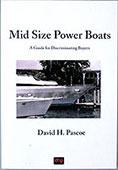







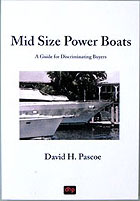
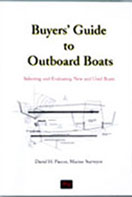

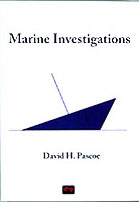
David Pascoe is a second generation marine surveyor in his family who began his surveying career at age 16 as an apprentice in 1965 as the era of wooden boats was drawing to a close.
Certified by the National Association of Marine Surveyors in 1972, he has conducted over 5,000 pre purchase surveys in addition to having conducted hundreds of boating accident investigations, including fires, sinkings, hull failures and machinery failure analysis.
Over forty years of knowledge and experience are brought to bear in following books. David Pascoe is the author of:
In addition to readers in the United States, boaters and boat industry professionals worldwide from nearly 80 countries have purchased David Pascoe's books, since introduction of his first book in 2001.
In 2012, David Pascoe has retired from marine surveying business at age 65.
On November 23rd, 2018, David Pascoe has passed away at age 71.
Biography - Long version